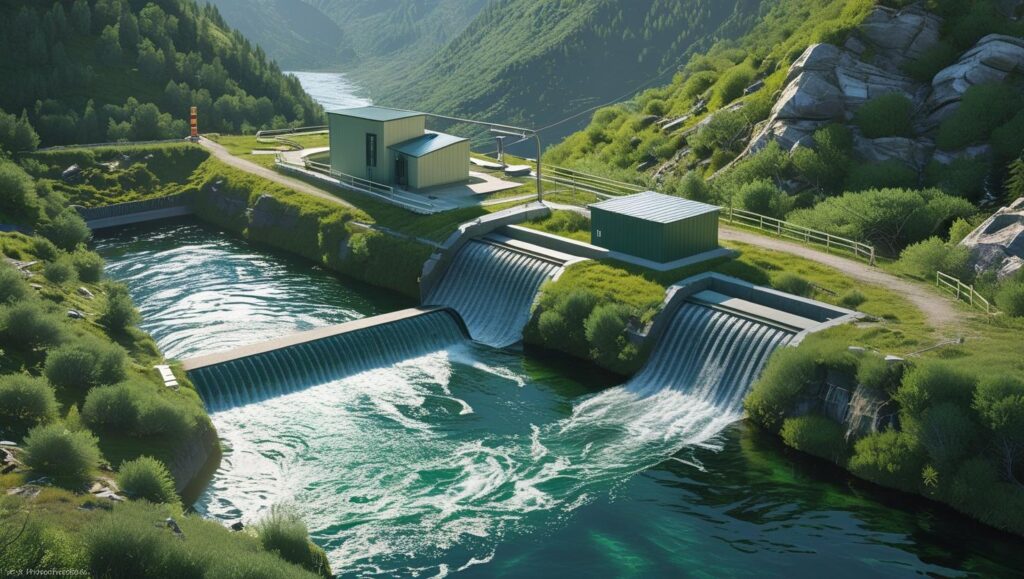Micro-Hydro Systems: Clean Energy for Remote Areas Revolutionizing Off-Grid Living
Imagine a community nestled deep in a mountain valley, miles from the nearest power grid, yet its homes are lit, its schools have internet, and its medical clinics can operate essential equipment. This isn’t a pipe dream; it’s the transformative reality enabled by **micro-hydro systems: clean energy for remote areas**. While large-scale dams often grab headlines, it’s these smaller, often overlooked hydropower solutions that are quietly revolutionizing access to reliable, sustainable electricity for off-grid populations worldwide. Harnessing the natural flow of streams and rivers, micro-hydro offers a consistent power source that can operate 24/7, unlike intermittent solar or wind. If you’re curious about how communities are achieving energy independence and fostering development in the most isolated corners of the globe, delve into the incredible potential of micro-hydro technology.
The Power of Small-Scale Hydro: Why It Matters for Remote Communities
Access to reliable electricity is a fundamental driver of socio-economic development. For remote areas, connecting to national grids is often prohibitively expensive, environmentally disruptive, or simply impractical due to challenging terrain. This energy poverty perpetuates a cycle of limited educational opportunities, inadequate healthcare, and stunted economic growth. This is where micro-hydro systems step in as a game-changer. Unlike solar panels that rely on sunlight or wind turbines that depend on consistent breezes, micro-hydro systems leverage the predictable, continuous flow of water, providing a stable base-load power supply. This consistency is crucial for powering essential services, small businesses, and improving the overall quality of life.
Addressing Energy Poverty and Promoting Sustainability
Beyond simply providing light, micro-hydro systems contribute to sustainable development by:
- Reducing Reliance on Fossil Fuels: Displacing diesel generators, which are costly to run, noisy, and pollute the air.
- Empowering Local Economies: Enabling small-scale industries, preserving food through refrigeration, and supporting digital connectivity.
- Improving Health Outcomes: Powering medical devices, vaccine refrigeration, and providing light for evening studies.
- Community Ownership and Management: Often locally owned and operated, fostering self-sufficiency and technical skills.
The environmental impact is also minimal compared to larger hydropower projects, as micro-hydro typically involves diverting only a small portion of a stream’s flow and returns it downstream with little alteration.
Components and Working Principle of Micro-Hydro Systems
A typical micro-hydro system, designed for a few households to a small village, consists of several key components working in harmony to convert the kinetic energy of flowing water into electricity.
1. Water Intake (Weir or Diversion)
This is where water is diverted from a stream or river. It’s designed to minimally impact the natural flow while effectively channeling a portion of the water into the system. Simple weirs or small diversion structures are commonly used, ensuring fish passage and ecosystem health.
2. Forebay and Settling Basin
After the intake, the water usually flows into a forebay, which acts as a small reservoir, and a settling basin. This area allows any debris or sediment to settle out before the water enters the pipeline, protecting the turbine from damage and ensuring efficient operation.
3. Penstock (Pipeline)
The penstock is the pipe that carries water from the forebay down to the turbine. The steeper the drop (or “head”) and the larger the diameter of the penstock, the greater the pressure of the water reaching the turbine, leading to more power generation. The “head” is a critical factor in determining the potential power output of a micro-hydro system.
4. Turbine (The Heart of the System)
The turbine is where the magic happens. Water pressure spins the turbine’s blades, converting the water’s energy into mechanical energy. Different types of turbines are used depending on the water flow and head available:
- Pelton Turbines: Ideal for high head (steep drop) and low flow.
- Francis Turbines: Suitable for medium head and medium flow.
- Cross-flow Turbines: Versatile, good for varying flow conditions and medium head.
- Propeller/Kaplan Turbines: Best for low head and high flow.
5. Generator
Connected to the turbine, the generator converts the mechanical energy from the spinning turbine into electrical energy (AC or DC). The size and type of generator depend on the desired power output of the system.
6. Controller and Load Management
A controller regulates the voltage and frequency of the electricity produced, ensuring a stable power supply. For off-grid systems, load management often includes diversion loads (e.g., heating elements) to absorb excess power when consumption is low, maintaining system stability and preventing damage.
7. Transmission Lines and Distribution
Finally, the generated electricity is transmitted via distribution lines to homes, schools, and businesses within the community. In some cases, battery banks are included to store excess energy for times of peak demand or lower water flow, enhancing reliability.
Key Considerations for Implementing Micro-Hydro Systems
While highly effective, implementing micro-hydro systems requires careful planning and consideration of several factors.
Site Assessment and Resource Availability
The most crucial step is a thorough site assessment to determine the available water resource. This involves measuring stream flow rates throughout the year (especially during dry seasons) and assessing the available “head” (vertical drop). A consistent and sufficient water supply is paramount for reliable operation.
Environmental Impact Assessment
Although micro-hydro has a low impact compared to large dams, it’s essential to conduct an environmental assessment. This ensures minimal disruption to aquatic ecosystems, fish migration, and water quality. Proper design of the intake and return of water is vital.
Community Engagement and Local Capacity Building
For remote communities, successful micro-hydro projects often depend on strong community involvement. Training local residents in operation, maintenance, and minor repairs ensures the long-term sustainability and ownership of the system. This empowerment aspect is a significant social benefit.
Cost and Funding
Initial capital costs for micro-hydro systems can vary widely depending on the site, desired capacity, and remoteness. However, once installed, operational costs are generally very low. Various funding models exist, including government grants, international aid, impact investors, and community cooperatives.
Regulatory and Permitting Challenges
Navigating local and national regulations and obtaining necessary permits can be complex. Understanding water rights, environmental protection laws, and land-use regulations is crucial for a smooth implementation process.
The Future of Micro-Hydro in a Connected World
As technology advances, **micro-hydro systems: clean energy for remote areas** are becoming even more efficient, reliable, and accessible. Innovations in smart monitoring systems, predictive maintenance using IoT, and more robust, modular turbine designs are making installation and management simpler. Furthermore, the integration of micro-hydro with other renewable sources like solar (hybrid systems) offers even greater energy security and resilience for isolated communities. The vision of a truly decentralized energy future, where every community can harness its local resources for power, is increasingly within reach, thanks to the quiet revolution of micro-hydro. If you’re passionate about sustainable development and empowering communities, explore how you can support or learn more about these remarkable clean energy solutions.



